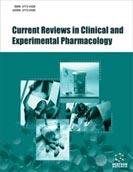Abstract
Background: The aim of the review was to comprehensively characterize the antimicrobial efficacy of bacteriophages in eliminating pathogens occurring in companion animals, as an alternative to antibiotics for controlling infections that pose potential threats to the health and life of people and to the environment.
Methods: The review contains detailed information on the characteristics and classification of bacteriophages and an analysis of their life cycle. The dominant element is a detailed analysis of the experimental use of bacteriophages in combating infections caused by various microorganisms in companion animals with regard to their potential use in therapy.
Results: It seems that in the near future, phage therapies will provide an alternative to antibiotics in the treatment of diseases caused by multi-drug resistant bacteria in people and animals.
Conclusions: The effectiveness of phage therapies depends on many factors and the properties of the bacteriophages themselves, which requires comprehensive knowledge of them.
Keywords: Bacteriophages, therapy, companion animals, bacterial viruses, antibacterial therapy, antibiotic resistance.
Graphical Abstract
[http://dx.doi.org/10.4161/bact.1.1.14942] [PMID: 21687533]
[http://dx.doi.org/10.1038/nrmicro1750] [PMID: 17853907]
[http://dx.doi.org/10.1016/j.dld.2015.07.008] [PMID: 26257129]
[http://dx.doi.org/10.3389/fmicb.2014.00355] [PMID: 25104950]
[http://dx.doi.org/10.1038/nature17193] [PMID: 26982729]
[http://dx.doi.org/10.3389/fmicb.2017.00566] [PMID: 28421059]
[http://dx.doi.org/10.1016/j.copbio.2008.09.001] [PMID: 18926909]
[http://dx.doi.org/10.4161/viru.25991] [PMID: 23973944]
[http://dx.doi.org/10.3390/v11020195] [PMID: 30813498]
[http://dx.doi.org/10.1128/mBio.01870-17] [PMID: 29559574]
[http://dx.doi.org/10.1016/j.cell.2019.01.001] [PMID: 30661755]
[http://dx.doi.org/10.1016/j.chom.2019.01.018] [PMID: 30763535]
[http://dx.doi.org/10.3390/v9040070] [PMID: 28368359]
[http://dx.doi.org/10.1007/s00705-016-3173-4] [PMID: 28040838]
[http://dx.doi.org/10.1186/s12985-017-0849-7] [PMID: 28915819]
[http://dx.doi.org/10.1016/j.tim.2018.05.009] [PMID: 29909042]
[http://dx.doi.org/10.1038/ismej.2017.16] [PMID: 28291233]
[http://dx.doi.org/10.1017/S0022172400031697] [PMID: 20474852]
[PMID: 19311785]
[http://dx.doi.org/10.1016/S0140-6736(01)20383-3]
[http://dx.doi.org/10.1046/j.1532-5415.50.7s.2.x] [PMID: 12121517]
[http://dx.doi.org/10.4161/bact.1.2.15845] [PMID: 22334863]
[http://dx.doi.org/10.1093/jhmas/jry024] [PMID: 30312428]
[PMID: 11197610]
[http://dx.doi.org/10.1093/cid/civ076] [PMID: 25747410]
[http://dx.doi.org/10.1016/S1473-3099(13)70318-9] [PMID: 24252483]
[http://dx.doi.org/10.1128/IAI.70.1.204-210.2002] [PMID: 11748184]
[http://dx.doi.org/10.5772/34296]
[http://dx.doi.org/10.3389/fmicb.2018.01696] [PMID: 30116226]
[PMID: 3455647]
[http://dx.doi.org/10.4161/bact.1.2.14590] [PMID: 22334867]
[http://dx.doi.org/10.3389/fmicb.2016.01515] [PMID: 27725811]
[http://dx.doi.org/10.2217/fmb-2017-0049] [PMID: 28434234]
[http://dx.doi.org/10.3390/v11010010] [PMID: 30585199]
[http://dx.doi.org/10.1073/pnas.1019378108] [PMID: 21402903]
[http://dx.doi.org/10.1128/JVI.02043-14] [PMID: 25142581]
[http://dx.doi.org/10.1111/j.1574-695X.2006.00044.x] [PMID: 16553803]
[http://dx.doi.org/10.1016/j.it.2012.05.003] [PMID: 22677185]
[http://dx.doi.org/10.1111/j.1751-7915.2008.00028.x] [PMID: 21261844]
[http://dx.doi.org/10.1038/ni.2614] [PMID: 23778792]
[http://dx.doi.org/10.1038/s41598-017-08336-9] [PMID: 28808331]
[http://dx.doi.org/10.3389/fmicb.2018.02511]
[PMID: 10722229]
[http://dx.doi.org/10.1016/0305-4179(94)90184-8] [PMID: 8054131]
[http://dx.doi.org/10.4049/jimmunol.0800224] [PMID: 19234207]
[http://dx.doi.org/10.1016/B978-0-12-394438-2.00002-5] [PMID: 22748808]
[http://dx.doi.org/10.3181/00379727-98-24112] [PMID: 13567777]
[http://dx.doi.org/10.1111/j.1365-2672.2004.02422.x] [PMID: 15610412]
[http://dx.doi.org/10.1007/s12223-011-0039-8] [PMID: 21625877]
[http://dx.doi.org/10.3389/fmicb.2017.00164] [PMID: 28228751]
[PMID: 5875403]
[http://dx.doi.org/10.1007/BF01311045] [PMID: 2764725]
[http://dx.doi.org/10.1371/journal.pone.0151184] [PMID: 26964063]
[http://dx.doi.org/10.1080/17425247.2017.1252329] [PMID: 27776446]
[http://dx.doi.org/10.1084/jem.78.3.161] [PMID: 19871319]
[http://dx.doi.org/10.1016/j.jsps.2011.10.001] [PMID: 23960788]
[http://dx.doi.org/10.3181/00379727-38-9973]
[http://dx.doi.org/10.1128/JB.41.4.447-455.1941] [PMID: 16560414]
[http://dx.doi.org/10.4067/S0301-732X2014000200002]
[http://dx.doi.org/10.1093/infdis/46.2.152]
[http://dx.doi.org/10.1001/jama.1934.72750490003007]
[http://dx.doi.org/10.2460/ajvr.72.8.1079] [PMID: 21801066]
[http://dx.doi.org/10.1099/00222615-37-4-258] [PMID: 1404324]
[http://dx.doi.org/10.1016/j.burns.2006.02.012] [PMID: 16781080]
[http://dx.doi.org/10.1016/j.vetmic.2010.05.014] [PMID: 20627620]
[http://dx.doi.org/10.4103/0971-5916.178615] [PMID: 26997019]
[http://dx.doi.org/10.1128/AAC.49.3.1220-1221.2005] [PMID: 15728933]
[http://dx.doi.org/10.14737/journal.aavs/2016/4.11.593.603]
[http://dx.doi.org/10.1263/jbb.100.280] [PMID: 16243277]
[http://dx.doi.org/10.1016/j.rvsc.2007.09.004] [PMID: 17959211]
[http://dx.doi.org/10.1080/21597081.2016.1220347] [PMID: 27738557]
[http://dx.doi.org/10.1006/anae.1999.0192]
[http://dx.doi.org/10.1089/mdr.2014.0120] [PMID: 25411824]
[http://dx.doi.org/10.1128/AAC.01774-15] [PMID: 26643348]
[http://dx.doi.org/10.2500/aap.2007.28.2958] [PMID: 17479604]
[http://dx.doi.org/10.1056/NEJMra054308] [PMID: 17124020]
[http://dx.doi.org/10.1016/j.transproceed.2005.12.073] [PMID: 16504739]
[http://dx.doi.org/10.4292/wjgpt.v8.i3.162] [PMID: 28828194]
[http://dx.doi.org/10.1016/j.ccc.2007.12.011] [PMID: 18361954]
[http://dx.doi.org/10.1007/s00018-004-4403-6] [PMID: 15747058]
[http://dx.doi.org/10.1016/j.micinf.2012.11.002] [PMID: 23159467]
[http://dx.doi.org/10.1186/s13099-016-0109-1] [PMID: 27340433]
[http://dx.doi.org/10.1128/IAI.01104-10] [PMID: 21321077]






























